How to Grow Carrots – How do you grow carrots successfully?
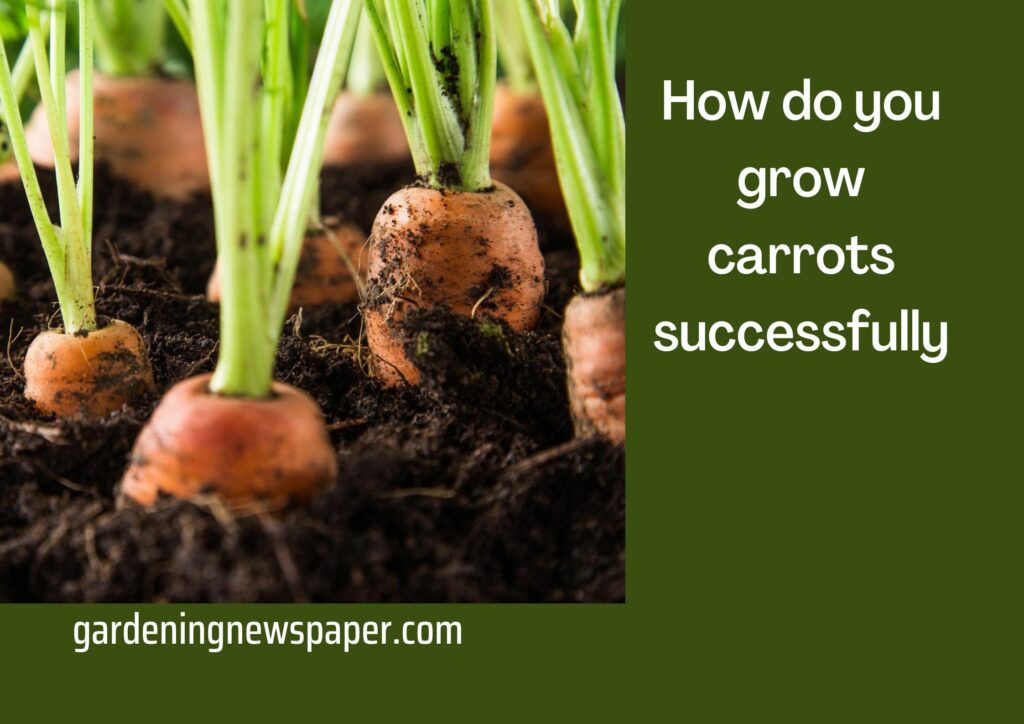
It can be difficult to find the best ways to grow carrots, but the delicious, crunchy goodness of this nutritious vegetable makes it worth the effort. Bugs Bunny knew something when he ate carrots all the time. These root vegetables are more than just delicious. They’re also good for you. Carrots can improve your digestive health, strengthen your immune system, and even lower the chance of certain types of cancer. While most carrot lovers buy their carrots at the grocery store, gardeners can also grow carrots at home with these plant care tips.
It’s one of the most difficult vegetables to grow, but it can be rewarding to grow your own carrots. You can still learn how to grow carrots if you have the right soil, and warm temperatures, and are able to wait several weeks before harvesting.
Carrot Plant Requirements
- The carrot plant is a biennial root veggie that is typically harvested in its first year. The delicate, fern-like leaves produce five-petaled flowers. However, it is the root that gives the Daucus Carota its name.
- It can grow from 1 to 12 inches in length. It’s an excellent choice for healthy, crunchy food. Although it is usually orange, it can take on many other colors.
- The carrot, which is native to Iran and Afghanistan and a cousin to turnip or parsnip, is also a vegetable. They were first domesticated in Asia in the 10th century. The Dutch 17th-century cultivation of orange varieties is the origin of the familiar orange variety.
- Carrot seeds are best sown in spring. It can take between 10 and 21 days for them to germinate.
- Carrots are not one of the fastest-growing vegetables. They can take 50 to 90 days to reach harvest, depending on which variety is being grown.
- You can make carrots even more delicious by leaving them in the ground in autumn. They can survive frost but you should dig them up before winter.
Carrot Varieties
There are many types of carrots. Here are some of the most popular:
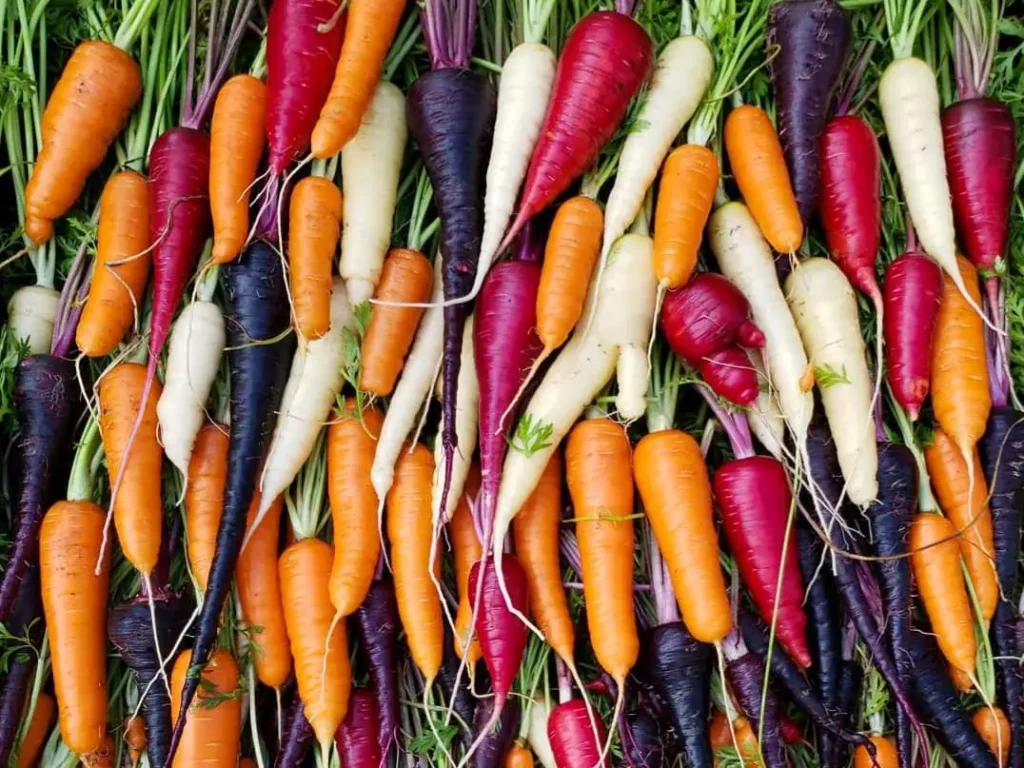
- Yellowstone – A Danvers variety that is known for its yellow roots measuring 6- to 8 inches long, Yellowstone carrots can be harvested early and produce strong tops that compete against weeds.
- Napoli – One of the fastest-growing varieties of carrots, Napoli produces 7- to 8-inch cylindrical roots and near-red flesh, typical of the Nantes variety that is both sweet and crunchy.
- Japanese Imperial Long: This Japanese Imperator variety is as long as 2 feet. This carrot is often sold in grocery stores because it has fast-growing leaves and higher sugar levels than other varieties.
- Hercules – This Chantenay hybrid variety grows to 6 to 7 inches in length and produces vigorous tops. They are very sweet but can become woody if not harvested at the appropriate time. They can be stored well.
- Paris Market: These sweet little “ball” and “mini” carrots have a red-orange exterior. They are 1 to 2 inches wide, making them a great choice for containers or gardens with rocky soil.
Carrot Planting
Even for gardening beginners, it is easy to grow carrots. As long as the soil is not too loose, it is possible to let roots grow. Carrots are known for their finicky nature due to the difficulty of spacing carrot seeds correctly and soil requirements.
What is the best month to plant carrots?
- It is important to know when carrots should be planted. This can make a difference in a successful or unsuccessful crop.
- Plant carrots as soon as you can work the soil in cool weather. This even applies to those who live only a few weeks before the last snow frost of spring.
- Even though they are cold-hardy, it is best to sow carrot seeds at night when temperatures hover around 55 degrees Fahrenheit.
- They can’t tolerate temperatures above 75 degrees in the day, so it is best to plant your carrot seeds in spring or autumn.
Where can you grow carrots? Do carrots need full sun?
USDA Zones 3-10 are good places to grow carrots. Although some varieties will tolerate poor or rocky soil, the ideal soil should be rich and loose. Wood ash, sand, and compost can all be used to add nutrients, drainage, and soluble potassium.
Carrots thrive in full sun, but they can also tolerate partial shade. They grow well in pots, raised beds, and containers. You can grow companion plants near leeks, onions, tomatoes, beans, and lettuce. They also repel flies.
Most carrots can be grown from seeds. Because the seeds are so small, it’s easy to oversow carrots.
- Prepare the soil by tilling and hoeing 8-12 inches deep, and adding compost.
- Seeds should be sown thinly, 2 inches apart and 1/4 in depth. Mix them with sand and space them out.
- This will help you track where they were planted.
- Soil should be used to cover the seeds.
- Keep the soil moist until the seeds germinate.
- At 4 inches in height, carrots need to be thinned so that the roots are at least 3 inches apart.
Can you grow carrots inside containers?
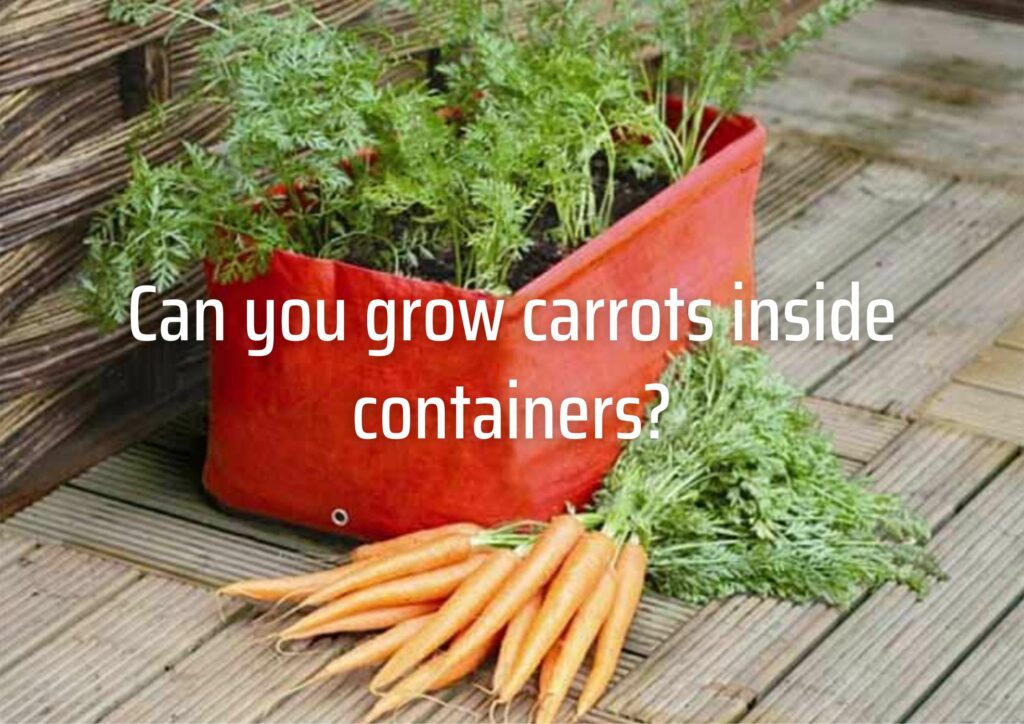
You can learn how to grow carrots inside containers with very little effort. Containers are a good choice for shorter varieties of carrots. Choose a container that is at least 12 inches in depth and large enough for the seedlings to grow. Make sure the container is well-drained, place it in a sunny area, and water thoroughly.
Because you will be growing them in soil that is free of stones, their roots will grow straight and without any forks. You can pack a lot of carrots in one pot because they are small and thin plants. A 10 Gallon Grow Bag measures 16 inches in diameter and can hold 24 to 36 carrots, depending on the type.
It will all depend on what variety you have when it comes to the time it takes to grow carrots in containers. However, most varieties can be picked within a week. around 75 days after germination. As a sign that it is time to harvest, look for the carrots’ tops just above the soil.
You can grow carrots in containers made from soil, which is light and well-drained. You should plant carrots in deep containers to allow for their development. Root crops can rot in soggy soil, so drainage holes are essential.
Watering Carrots – Do carrots need a lot of water?
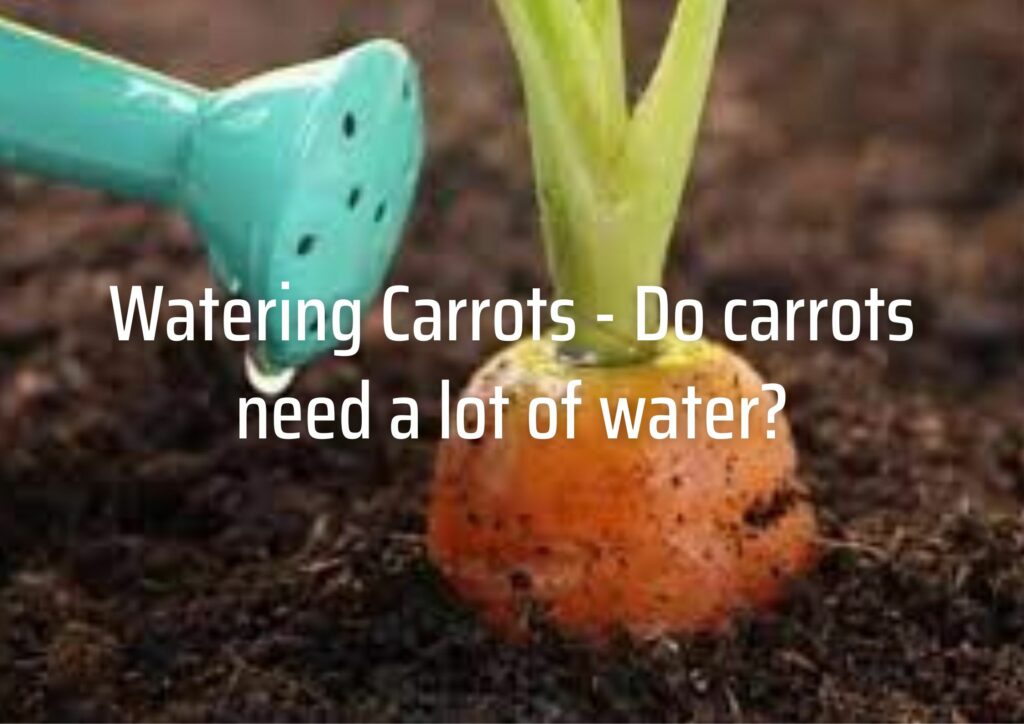
Carrots require about 1 inch of water per week. You can also add as much water as you need to keep the soil moist to 3 inches. Deep watering promotes root development. If the tip of the carrot doesn’t receive enough water, it will stunt its growth. Water early in the morning, as with all plants.
It is crucial to water your carrots consistently throughout all stages of their growth. To retain soil moisture, mulch around carrot seedlings once the tops have emerged.
Fertilizing Carrots – Do carrots need fertilizer?
You will need to fertilize carrots if your soil isn’t rich in nutrients. However, this should be done at least 2 weeks after tops have emerged and reached about 3 inches in height. To minimize leaf growth, you can use any vegetable fertilizer. The best fertilizer for carrots is a 0-10-10 fertilizer or a 5-15-15-15 fertilizer. Carrots are a good example of carrots that have potassium and phosphate, which encourage root growth.
Too much nitrogen is found in many water-soluble fertilizers. You can use a granular fertilizer to water your plants. It is best to use half the amount of fertilizer recommended by the package instructions for carrots. Too much fertilizer can result in a twisted root and less flavorful carrots. Mix compost in the soil, and then add fish emulsion to get nutrients.
Propagating Carrots
Carrots usually grow from seeds. Although carrots that are planted in the ground won’t produce any other carrots from their roots but will produce a carrot plant which will produce carrot seeds that can then be used to grow more carrots.
It is also very easy to grow carrots using tops. So save your table scraps. These are not carrot plants. A carrot is a taproot that cannot grow itself. Place carrot tops on a marble tray suspended in water or on moist newspaper to sprout carrot plants.
How can I tell when my carrots are ready to harvest?
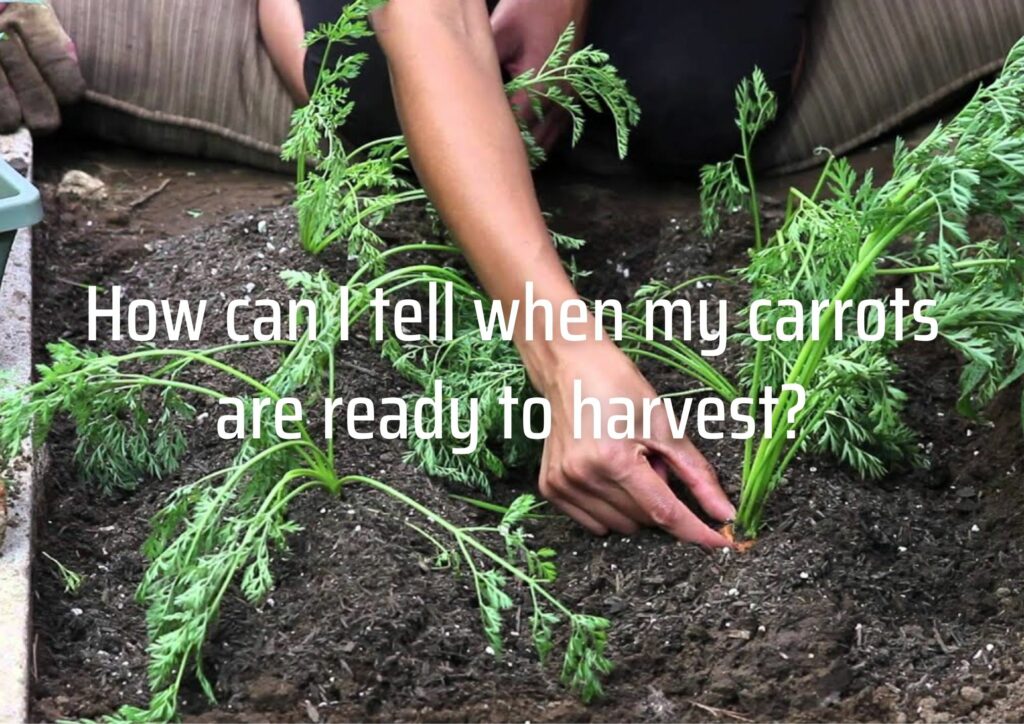
The end product is what drives this highly-regarded crop. It’s important to know when to harvest carrots. Here are the details on when and how you can harvest carrots.
The carrots are ready for harvest when the carrots’ orange tops rise above the soil. For timing, refer to the seed packet instructions. Generally, you should wait between 50 and 75 days. Too early harvesting of carrots can result in bland vegetables. They need time to mature.
Most gardeners begin harvesting carrots when they are finger-sized (about 1 to 1 1/2 inches in size). However, if you don’t feel ready to pick them yet, these root veggies can remain underground for quite some time.
It can be difficult to harvest carrots because you don’t know what they are until you pull them out. Once enough time has passed, you can check if the carrot is ready. If it’s ready, you can harvest the most needed and save the rest for later.
- Use a spade to loosen the soil around your carrots or trowel.
- Take the stem at the base and twist it gently. Then pull.
- To prevent wilting, remove the tops of carrots (foliage).
Carrot Plants Potential Diseases and Pests
Many animals love carrots ( groundhogs, opossums, and rabbits), so gardeners might want to fence off their carrots or grow some extra. It’s not a good idea to share your carrots with bugs. The carrot rust fly is the biggest pest to this crop. It lays eggs near carrot tops and allows hatchlings to tunnel through carrots while they eat. The carrot weevils do the same thing, but nematodes microscopic worms can deform roots.
Leaf spots, leaf blight, and carrot yellows are all possible diseases for carrots. These diseases can be fatal and should be removed. Carrots should also be removed from the same location the next year to prevent soil microorganisms from living in the soil for long periods.
Carrots are safe for dogs, cats, and other animals.
Carrots are a good low-calorie and low-fat option for dogs. Cats may enjoy carrots, even though they are less likely to eat them. Horses, alpacas, and squirrels are all known to enjoy carrots. Groundhogs, groundhogs, groundhogs, rabbits, and deer also like carrots.
Carrots are edible and can be eaten by humans. However, people who eat too many carrots for too long may develop carotenemia. It usually affects the nose, mouth, hands, feet, and knees.
